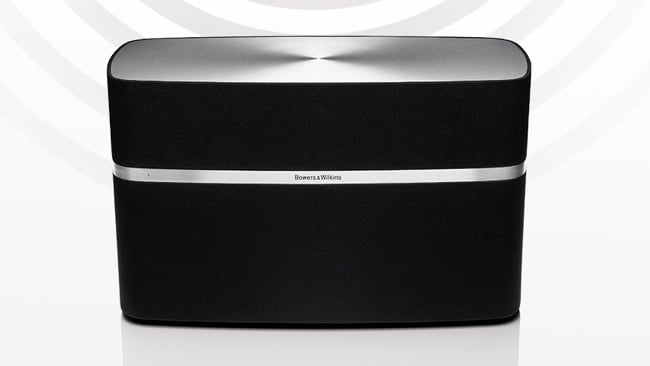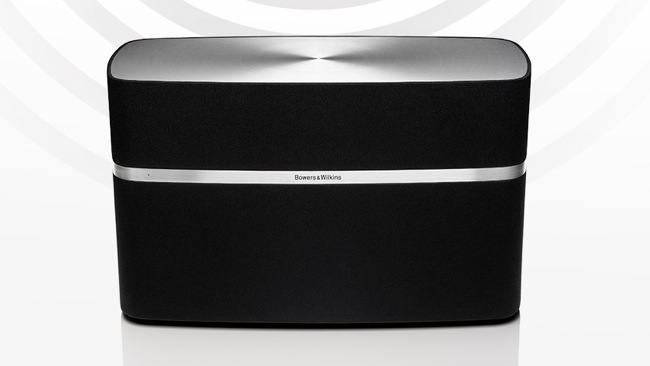
 B&W A7
B&W A7
I'm always excited when I find a new consumer device that can be used in a professional context. The way that consumer technology is catapulting ahead, this is likely to happen more and more often
On the other hand, although the technology might be impressive, the presentation of the goods might not be up to professional standards. If a product (a child's talking robot toy for example) is to be made in huge quantities, that probably justifies the maker spending money on making sure the software in the product is good. But that reasoning doesn't extend to the quality of, say, the loudspeaker that reproduces the robot's voice, which will probably be the cheapest device that the manufacturer can get away with.
So when you hear the words "iPod Dock", what springs to mind immediately is probably not a "professional" device. And you'd be right. I've heard iPod docks that have sounded worse than 1960s transistor radios. I have also come across iPod speakers that don't actually sound bad, but which you'd never dream of using for anything that really mattered. They are all, mostly, very cheap, though.
Great expectations
So I didn't have great expectations when I came across Bowers and Wilkins' A7 wireless speaker system. Lent to us for review by B&W, It's pretty small and very expensive, but such gigantic claims are being made for it that I thought I would check it out. One reason I wanted to do this is because if it actually does sound good, then it's potentially a pretty useful transportable tool for anyone that needs a high-quality audio monitoring system that takes up virtually no space. As a bonus, it supports Apple AirPlay: you can play audio from your iPad, iPod, Mac or PC wirelessly through the device, which makes it even more convenient for quick set-ups, although you do have to go through the rigmarole of setting up WiFi passwords, etc. (Generally, connectivity is good, with optical digital audio, Ethernet and USB).
So, can this diminutive device sound good enough to have a professional role? Find out below.
Caveats
First of all, some caveats.
It's small. Which means that by definition, the stereo speakers are going to be very close together. So close, in fact, that I never actually detected any stereo effect whatsoever when playing music. You would probably want to call it "softened mono" rather than "stereo".
Next, you can't change the laws of physics. Deep, powerful bass requires a lot of air to be moved, and however cleverly you arrange internal ducting and external ports, a six-inch driver isn't going to shift the Earth on its axis, nor is it going to give you much excitement in the lower reaches of the audio spectrum. This may not be the problem it seems, though, as we'll see in a minute.
Airy and delicate
Third, the A7 is so good, that it can make your audio sound terrible, if it is terrible. Let's be perfectly clear about this: if it is good, it will sound good. Piano and chamber music sounded fantastic. Classical guitar sounded airy and delicate, with presence and strength where necessary; the dynamic range of the A7 is extremely wide.
But for audio that's been subject to the normal types of data compression, every little compromise is audible. Spotfy - sourced music at the lower streamed quality sounds harsh, as if it's had an encounter with a cheese grater. A track I always use to test audio compression, Eternal Flame by the Bangles, sounded uncomfortable and strident, not because the A7 couldn't handle it, but because it reproduced every little piece of damage caused by the compression. MP3 and similar codecs can only work when there are spaces left in the audio spectrum. The combination of (dynamic rage) compression, very bright vocals and a wall of reverb in the final parts of the Bangles track pushes the data compression beyond its comfortable limits, and it shows.
But this is exactly what you want in professional audio monitoring - you need to hear the defects.
The question of Bass
Coming back to the lack of bass extension, this is actually preferable to the tendency of most cheaper audio systems to "flatter" the sound, by boosting the bass around 66Hz and perhaps making the top end a bit too bright. The A7 certainly is bright when it needs to be but the audio always sounded pretty flat across the spectrum. I compared it with a mid-price conventional Sony stereo system and it was clear that while the Sony didn't sound bad, it was indeed using all the usual tricks to flatter the sound, but in a quick A/B comparison, the A7 sounded fuller, because there was no perceptible dip between the bass and high end.
So, to sum up, once you get over the shock of the price, the A7 is a pretty great piece of kit: if you have to work from a laptop and need high quality audio monitoring (and you're not trying to do an accurate stereo mix) it might just be worth taking this in your luggage. There's no way you'll get a better sound in a smaller place, or a louder one. When I first turned the A7 on, I turned the volume up to see how loud it would go. Fairly quickly, it went into distortion. Or so I thought. In fact, I only realised how loud you had to go before the sound got out of shape when someone came into the (quite large) room and I couldn't hear what they were saying. It turned out that this thing goes so loud without distorting that you simply don't realise how powerful it is!
If you just want to show off your work on an iPad, but you must have a good account of the soundtrack, it might be worth taking the A7 with you in a flight case.
Could you get by using an A7 for all your audio work? No, probably not, but it is such a useful and high quality device that I can see B&W selling quite a few as a useful part of any professional's tookit.
The Bowers and Wilkins A7 costs around £700/$800 (That's not based on the Pound/Dollar exchange rate but on the actual in-shop prices on each side of the Atlantic, which if my arithmetic is correct means that it's a somewhat better deal in the US).
Tags: Audio


Comments